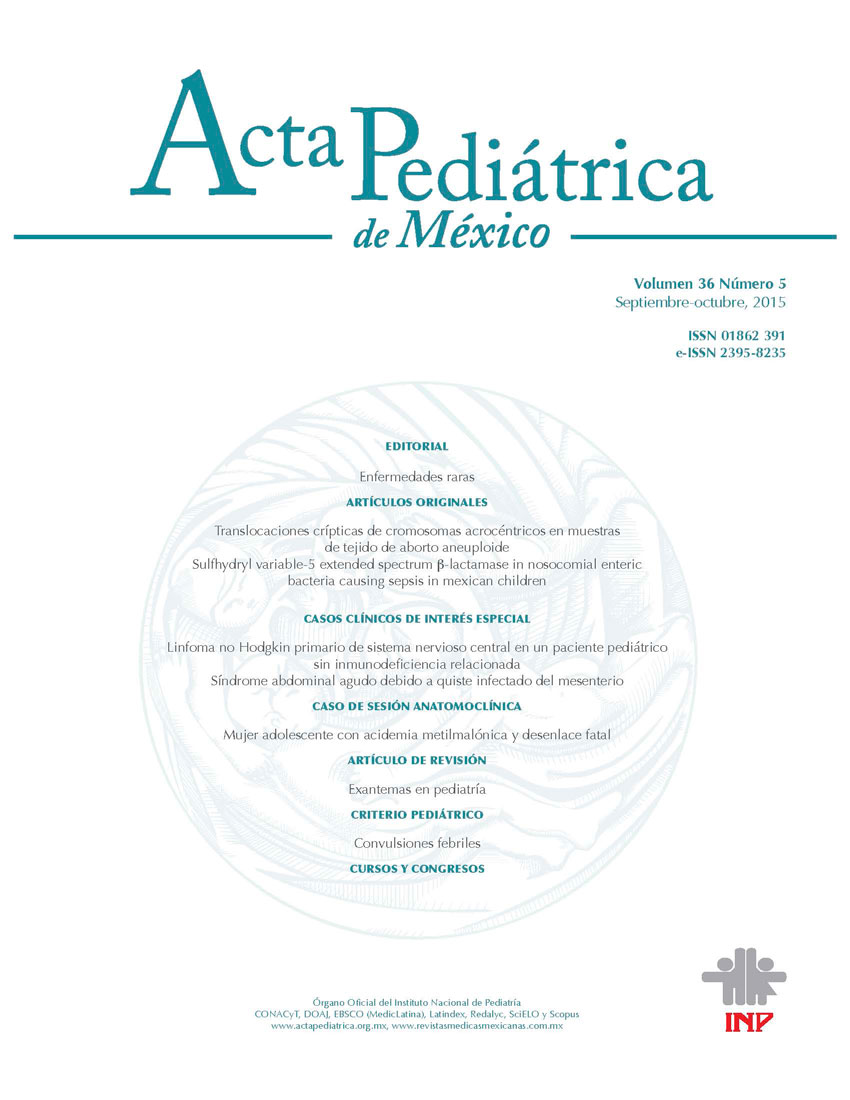Sulfhydryl variable-5 extended spectrum β-lactamase in nosocomial enteric bacteria causing sepsis in mexican children
Resumen
Introduction: Enteric bacteria causing nosocomial infections are often resistant to third-generation cephalosporins due to the production of extended-spectrum β-lactamases (ESBLs).
Objective: To describe and characterize the ESBLs pattern present in Klebsiella pneumoniae and Serratia marcescens strains, isolated as causative of nosocomial sepsis in pediatric patients at Instituto Nacional de Pediatría (National Institute of Pediatrics).
Material and methods: We analyzed 94 strains of K. pneumoniae and 7 of S. marcescens isolated from clinical specimens from 2002-2005, causative of sepsis in a children’s hospital. We evaluated antibiotic susceptibility and detection of ESBL phenotypes by disk diffusion methods; ceftazidime-resistant isolates were further characterized by pulsed field gel electrophoresis (PFGE); and ESBLs were phenotypically and genotypically characterized by isoelectric focusing, polymerase chain reaction (PCR) and sequencing. We also assed for presence of conjugative plasmids bearing the ESBL gene.
Results: 51/94 (54%) of K. pneumoniae isolates, and 5/7 (71%) of S. marcescens isolates were resistant to ceftazidime; all carried a blaSHV-5 gene. All K. pneumoniae isolates had a distinct PFGE profile, yet all carried a ~48-Kb plasmid, that was conjugatively transferable to an Escherichia coli receptor, which expressed the resistance phenotype. On the other hand, all S. marcescens isolates had a similar PFGE profile, were unable to transfer the ceftazidime-resistance phenotype, and were isolated from the same ward in a short time-span suggesting an outbreak.
Conclusions: The overall prevalence of ESBL-producing enteric bacteria in this hospital is high but similar to other Latin American reports. The sulfhydryl variable-5 (SHV-5) ESBL gene appears to reside in a highly mobile plasmid, capable of spreading among different K. pneumoniae clones and perhaps even to S. marcescens.
Derechos de autor 2015 Acta Pediátrica de México

Esta obra está bajo licencia internacional Creative Commons Reconocimiento 4.0.



